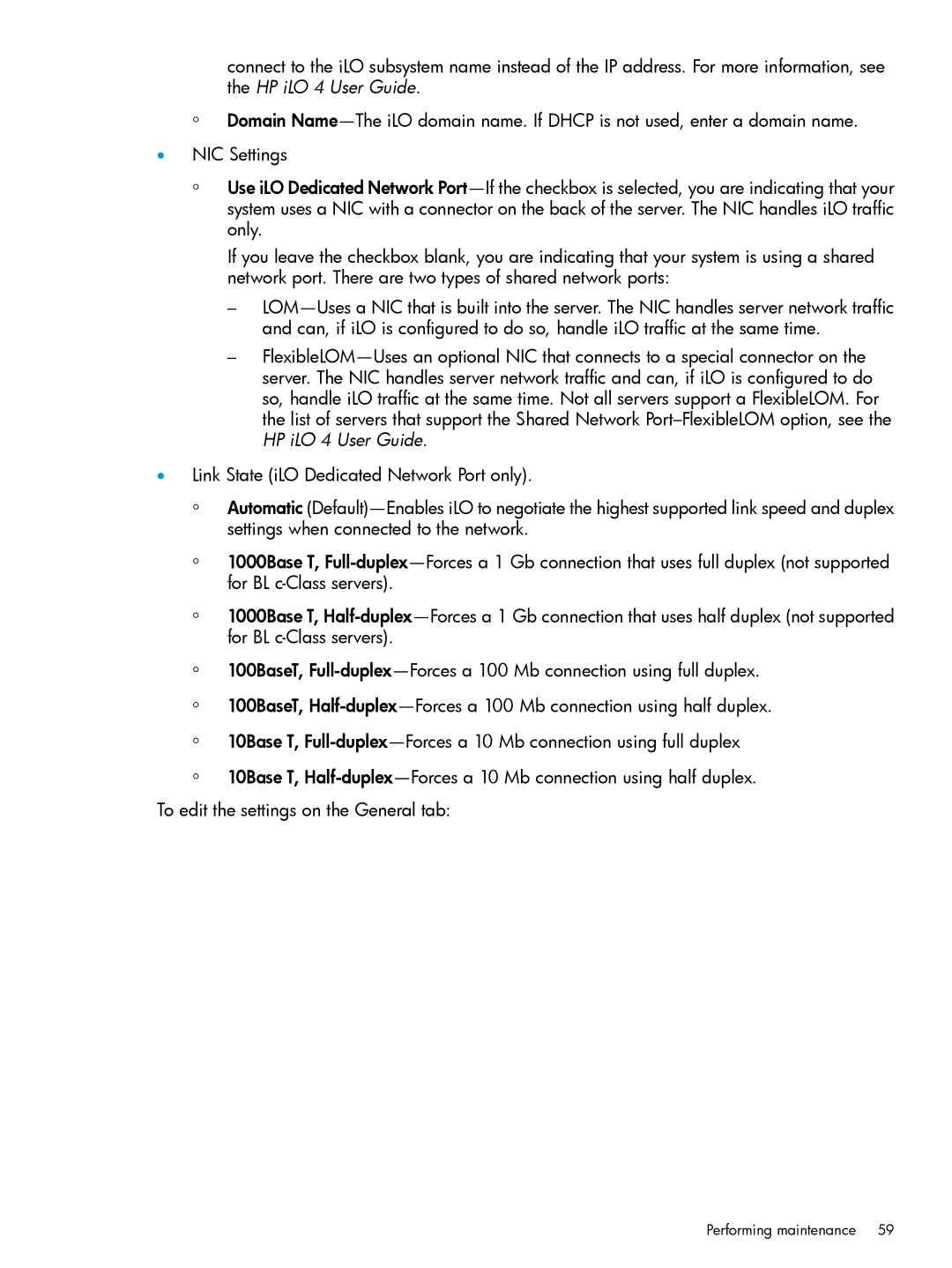connect to the iLO subsystem name instead of the IP address. For more information, see the HP iLO 4 User Guide.
◦Domain Name—The iLO domain name. If DHCP is not used, enter a domain name.
•NIC Settings
◦Use iLO Dedicated Network Port—If the checkbox is selected, you are indicating that your system uses a NIC with a connector on the back of the server. The NIC handles iLO traffic only.
If you leave the checkbox blank, you are indicating that your system is using a shared network port. There are two types of shared network ports:
–LOM—Uses a NIC that is built into the server. The NIC handles server network traffic and can, if iLO is configured to do so, handle iLO traffic at the same time.
–FlexibleLOM—Uses an optional NIC that connects to a special connector on the server. The NIC handles server network traffic and can, if iLO is configured to do so, handle iLO traffic at the same time. Not all servers support a FlexibleLOM. For the list of servers that support the Shared Network Port–FlexibleLOM option, see the HP iLO 4 User Guide.
•Link State (iLO Dedicated Network Port only).
Automatic (Default)—Enables iLO to negotiate the highest supported link speed and duplex settings when connected to the network.
1000Base T, Full-duplex—Forces a 1 Gb connection that uses full duplex (not supported for BL c-Class servers).
◦1000Base T, Half-duplex—Forces a 1 Gb connection that uses half duplex (not supported for BL c-Class servers).
100BaseT, Full-duplex—Forces a 100 Mb connection using full duplex.
100BaseT, Half-duplex—Forces a 100 Mb connection using half duplex.
10Base T, Full-duplex—Forces a 10 Mb connection using full duplex
10Base T, Half-duplex—Forces a 10 Mb connection using half duplex.
To edit the settings on the General tab:
Performing maintenance 59
